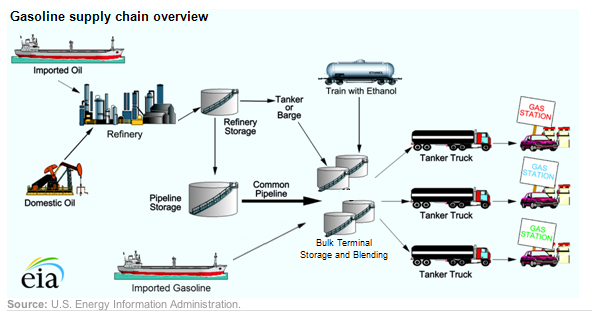|
Draw a cycle, a system or a flow - Schematic Representation |
Carefully examine this drawing. Click on it for a larger view.

This figure was created by Robert A. Rohde, The file is licensed under Creative Commons Attribution NonCommercial ShareAlike 2.5 LicenseThis figure is a simplified, schematic representation of the flows of energy between space, the atmosphere, and the Earth's surface, and shows how these flows combine to trap heat near the surface.
The drawing helps you grasp a complex set of events and how they interact.
Here is another example developed by the government. 
Make Your Own Schematic Representation
There are many cycles, systems, flows and events in a wetland ecosystem or that can impact a wetland.
Select one.
Make a schematic representation to show/explain what is occurring.
You may draw it freehand, cut and paste pictures from newspapers or magazines or use a computer to illustrate it.
Include a title in the project. On a separate paper/page - write a brief explanation that reinforces or explains what you are illustrating.
Examples of schematic representations:
The Ecopoesis model | Phases of Moon | Wiring a Basic Light Switch | Parasitism | Aquarium water pumping
Earth's Tilt Is the Reason for the Seasons! | Cells the building blocks of life | Achieving simple goals
Schematic diagram of a modern von Neumann processor | Schematic Diagram - Education
Schematic Diagram of ecosystem | Rock Cycle | Types of taxes
![]() Wetlands: Habitat / Mammals / Birds / Aquatic insects / Plants & trees / Amphibians
Wetlands: Habitat / Mammals / Birds / Aquatic insects / Plants & trees / Amphibians
Wetland Vocabulary Exercise / Monitor Wetland
Wetland food web / Wetland or frog song activity / Eagles Status Evaluation / Competition Conundrum
Map Wetlands in your Community / Lentic ecosystem or Lotic ecosystem? /
Wetland Poem Project / Water & Watershed Studies / Water Wars / Map PA Waters
Bats are our Buddies / Bats at the Beach Activity / Firefly Watch - fun project
Posted 2/2010 by Cynthia J. O'Hora Updated 12/2023
![]() Save a tree - use a digital format. Proof your responses. It is funny how speling errors and typeos sneak in to the bets work.
Save a tree - use a digital format. Proof your responses. It is funny how speling errors and typeos sneak in to the bets work. ![]()
Pennsylvania Science Anchors Pennsylvania Science & Technology Standards and Ecology & Environment Standards Science NetLinks Benchmark 5 - The Living Environment - How living things function and interact. A. Diversity of Life D. Interdependence of Life - " In all environments freshwater, marine, forest, desert, grassland, mountain, and others organisms with similar needs may compete with one another for resources, including food, space, water, air, and shelter. Aligned with Pennsylvania Academic Standards: Reading, Writing, Science & Technology, Ecology & Environment, Mathematics, Geography, Career. Aligned with National Academic Standards: Technology, Science, Geography. |